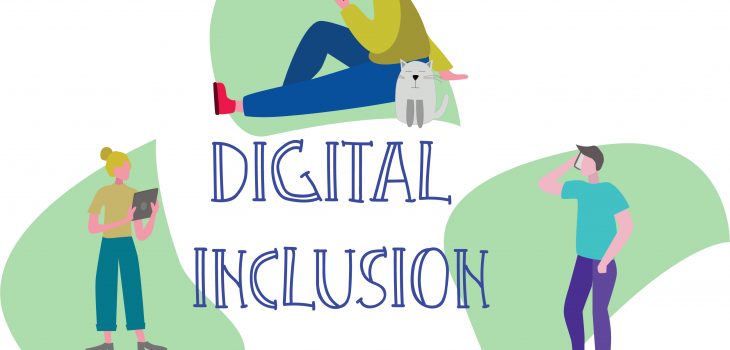
Digital inclusion in Italy, how the situation has changed…
Digitization process started with Italy’s National Recovery and Resilience Plan (PNRR), aims to bring the digitization level of the Italian social and economic fabric according to the standards of most advanced European countries.

Reduction of the digital divide within the population is one of the reference targets of the implementation plan, precisely because the digital divide prevents equal participation and reduces the opportunities for citizens who are excluded from it.
Access to technologies and digital services offered both by private companies and institutions and by public administrations is an indicator of fundamental importance in the process of enhancing social and cultural inclusion for Italy, which so far has never shone in this field. Now thanks to Italy’s PNRR and the European funds allocated within the #NextGenerationEU program, Italy has the opportunity to initiate a virtuous cycle of reforms, which accelerate the digitization process and technology access by citizens.
Verifying how the digital inclusion scale has evolved in 2021, organizing the data processed by Eurostat, by age group of the population and also by level of education.
Percentage of people broken down by age who in 2021 have never made any access to the internet
Compared to 2020, the situation continues to improve for all age groups. With 74% (in 2020 it was 79%) citizens over 75 remain at the bottom of the queue. The gap with the EU 27 nations citizens over 75s is still too high, which in 2021 stood at 18% (in 2020 it was 21%). Young people between 16 and 19 with 1% (in 2020 it was 2%) remain the lowest percentage of people who don’t access the internet.
Percentage of people broken down by age groups who access the internet at least once a week in 2021
In Italy, young people between 16 and 19 years old are those with the highest level of digitalization, in fact as many as 97% access the internet at least once a week (in 2020 it was 92%). This percentage decreases progressively with increasing age up to 15% (in 2020 it was 12%) of citizens over 75s.
Breakdown by age group of Italian citizens who accessed the internet at least once a week in 2021
Percentage of people broken down by education level who access the internet at least once a week in 2021
This bar graph relates to the subdivision of the population into three groups of people by level of education:
- High education;
- Medium education;
- Without or low education.
The percentages of people using digital services increase as the level of education increases. Citizens with low or any education who use the internet once a week grow from 61% in 2020 to 64%. Percentage of citizens with a high education increased by 1 point to 94%. Relevant is the data relating to Italian citizens with an medium level of education, which rising to 88% reaches the level of Europe – 27 nations